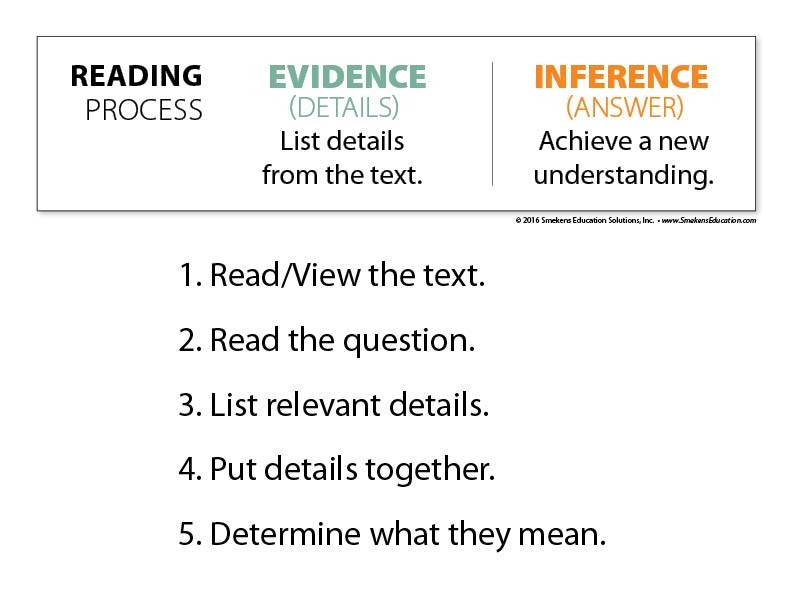Inference is using observation and background to reach a logical conclusion. Readers use textual clues and their own background knowledge to understand deeper meanings, character motivations, or the overall message of a text. You probably practice inference every day.
Example:
- If you see someone eating a new food and he or she makes a face, then you infer he does not like it.
- If someone slams a door, you can infer that she is upset about something.
-
Improved Reading Comprehension:
Inferencing helps students grasp the nuances of a text, understand complex ideas, and engage with material more deeply.
-
Enhanced Critical Thinking:
Inferencing requires students to analyze information, evaluate evidence, and form reasoned judgments, which are vital for academic success.
-
Effective Communication:
Inferencing skills enable students to express their understanding of a text clearly and convincingly, both in writing and verbally.
-
Real-World Applications:Inferencing is a transferable skill used in various aspects of life, from understanding social cues to making informed decisions.
Why do students struggle with making inferences?
Inferential questions are not answered directly in the text. Students need to go beyond the literal meaning of the text and use their prior knowledge and reasoning skills to draw conclusions. This means using higher-level thinking skills.
How to make a successful inference:
1. Identify the question or situation:
- Determine what you’re trying to infer. This could be a question about a character’s motivation, an author’s purpose, or a future event.
2. Gather information:
- From the text (or situation): Look for clues, details, and evidence that relate to your question. Pay attention to character actions, descriptions, dialogue, and any other relevant information.
- From your own background knowledge: Think about what you already know about the topic, the characters, or similar situations.
3. Make connections:
- Analyze the information you’ve gathered. Look for patterns, relationships, and connections between the details.
4. Draw a conclusion:
- Based on the connections you’ve made, form a logical inference that answers your initial question.
5. Consider alternatives:
- Think about other possible inferences and evaluate how well the evidence supports them. Choose the inference that is most strongly supported by the evidence.
6. Refine your inference:
- If new information arises or if you realize your initial inference was incorrect, be willing to adjust your conclusion.

